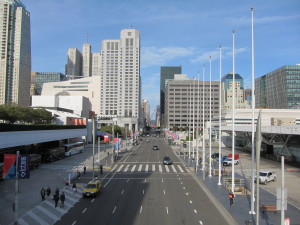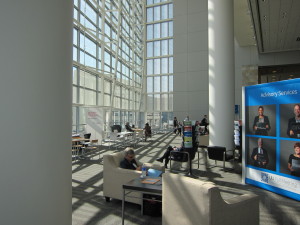
By Sharon Simonson
SAN FRANCISCO — The Bay Area’s high housing costs, limited housing diversity and inadequate amenities are reducing life satisfaction for all residents but especially the millennial-generation of young adults whose labors are helping to fuel the technology industry boom.
According to a new report from the Urban Land Institute, the disquiet is most acute in Santa Clara County, where residents of all ages are the least satisfied with their current living choices and the least confident of their ability to buy a home or rent an apartment they want. Santa Clara County has the highest concentration of technology companies in the region and the highest proportion of millennials.
South Bay residents are also the most likely to feel that they lack desirable, nearby outdoor space for exercise. Thirty percent of the county’s respondents said traffic makes it unsafe to walk in their neighborhoods. The overwhelming support for more bike lanes – 62 percent of the populace want them compared to less than 50 percent elsewhere in the Bay Area — likely stems from the extreme auto-orientation of the existing transportation network and the high traffic volumes, the report says.
The findings reveal again the region’s Achilles heel in the competition for the all-important millennial workers, the report, “Bay Area in 2015,” concludes. “Millennials make up the largest, most diverse generation in our history, and they will have an enormous impact on the success of our cities,” ULI Global Chief Executive Patrick L. Phillips said in a prepared statement.
Released at ULI’s 2015 Fall Meeting in San Francisco, “Bay Area in 2015” narrates the results of a 701-person survey of Bay Area residents examining what people want from their homes and communities and how they feel about both now. It pairs with a like ULI survey and report, “America in 2015,” published earlier this year. ULI is a nonprofit enterprise dedicated to land planning and development for sustainable communities.
The telephone survey of adults living in the nine-county Bay Area was conducted for ULI by Belden Russonello Strategists in live interviews on landlines and cellphones from Feb. 4 to Feb. 16. The margin of sampling error for the results of a probability sample of this size is plus or minus 3.7 percentage points at the 95 percent confidence level, the report says. For smaller subgroups of the survey, such as the generations, the margin of error is higher.

Housing choices do drive moves, real estate economist Jed Kolko said in a ULI session,“Demographic Reality Check,” after the survey results were released. But it is more complicated than that. Most people move to find less expensive or better quality housing. But when they do, they typically stay within the same metropolitan area. When they leave a metro, it is almost always for a job.
The millennial generation as a group “strongly desires to be homeowners,” the report says. But less than a quarter of the Bay Area’s millennial-generation adults believe they will be able to buy the home or rent the apartment they want in the next five years. That compares to 52 percent of the millennial generation nationally.
At the same time, fully three-quarters of the region’s millennial population — those aged 18 years to 36, ULI says — expects to move in the next five years, the survey found. Coupled with the strong desire to own a home, conditions could induce millennials to abandon the Bay Area for more affordable, amenity-rich locations, the report concludes.
Young adults today are not more drawn to cities than their counterparts in the past despite a lot of current perception, Kolko said. The percentage of college-educated 25- to 34-year-olds living in U.S. neighborhoods with the highest population densities has risen less than 2 points since 2000, to 11.9 percent in 2013, he said. The proportion that lives in all urban neighborhoods nationwide has fallen slightly in the same time to 25.3 percent.
Optics fuel the misunderstanding: today in America, there are more 24-year-olds than any other age group, he said.
“There is no case for urban living (in the United States). U.S. housing policies make housing more plentiful and cheaper in the suburbs. Prices are rising faster in the cities, and the urban housing supply is particularly constrained,” Kolko said. A broad cost is a less robust economy, as people who live in cities are more productive. “What people do does not mean that is what they want,” Kolko said. “It’s about supply and the cost of the options.”
Residents in the central Bay Area — including San Francisco, San Mateo, Alameda, Contra Costa and Marin counties — are the happiest with the quality of life in their communities, ULI found. Residents in the area are overall wealthier, more likely to be Asian and more likely to ride a bike daily than in the South Bay or the North Bay, including Napa, Solano and Sonoma counties.
Bay area residents are more likely than U.S. residents as a whole to prefer an auto-optional lifestyle. Sixty-eight percent rate walkability, including pedestrian-friendly features, as a top or high priority, compared to 50 percent of all Americans. Half of Bay area residents — compared to 32 percent of all Americans — say good public transit access would be “a top or high priority” when selecting a new home.
Drawing his attention now is the “enormous shift” in millennials’ behavior toward family formation, Kolko said. Millennials are postponing marriage and children — two life events that often trigger new housing choices. In 1970, nearly half of Americans aged 18 years to 34 were married with kids. Today a fifth of the same age group fits in the same category. “People think about the suburbs when the first kid turns 5,” he said.
He also is watching the changes in the nation’s ethnicity and nativity, he said. Only about 5 percent of native-born white senior citizens live with their children or another family member. Among foreign-born Asian Indians and the Vietnamese — both of which have large populations in the Bay Area — the proportion of senior citizens living with children or other family approaches half.
(Photos by Sharon Simonson)